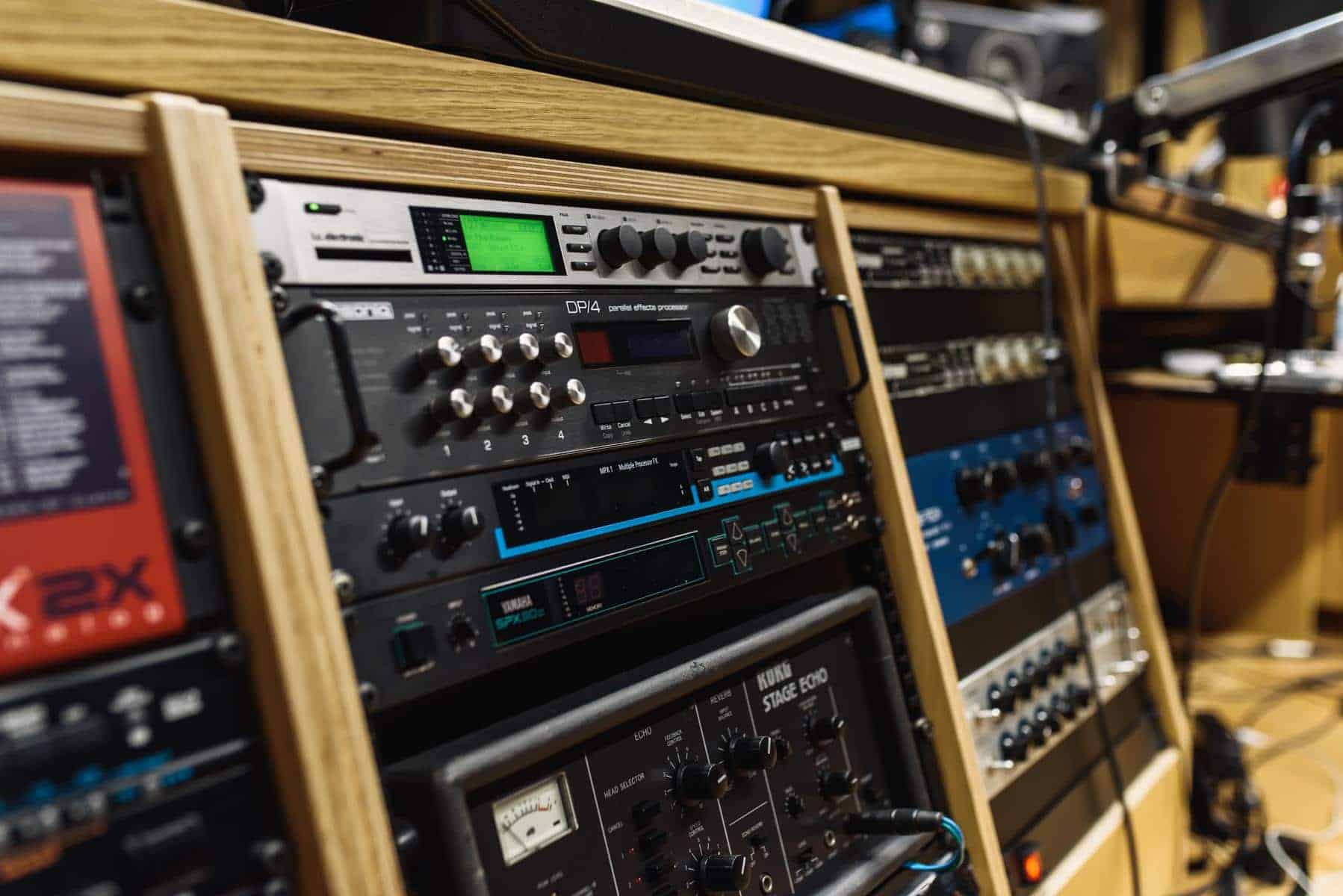In fact, multiple processor types make up a typical mastering chain. Each of multiple processor types serves a specific purpose. Whether you hire a mastering engineer or use instant AI mastering online, the process has similar elements that you should be aware of.
In this article, I’ll go over each stage of a typical mastering chain and explain how it affects your results.
1. Pre-mastering
Mastering is the final step in the production process before you release your music.
That means this is your last chance to address any issues that may have slipped through your final checks on the mix.
If any flaws remain in the stereo audio file, the mastering engineer can use audio restoration techniques to help reduce their impact.
I’m referring to clicks, pops, and other artifacts that may become more noticeable after mastering.
While we can address these issues during the mastering process, it is always preferable to submit your finished files with no such issues.
Following this, the mastering engineer may make changes to the file’s level or use subtle automation to balance out sections.
Again, if your mix has enough headroom and dynamics to begin with, they won’t have to bother with this. That’s a good thing—when it comes to mastery, less is often more!
If you want to learn more about the pre-mastering process, check out our in-depth guide.
2. Mastering EQ
Engineers use equalization at several key points in the signal flow in a typical mastering chain.
It’s common, for example, to include a high-pass filter to prevent ultra-low frequencies from straining the listener’s speakers.
High-pass filtering also prevents excessive low-end from activating dynamics processors such as compression and limiting.
Furthermore, we use EQ to shape the overall frequency balance of the mix as well as to tailor the response of other processors in the chain.
The goal of EQ in mastering is to subtly correct any issues that stand out while bringing out the best in the song.
3. Mastering compression
Compression is an important part of any mastering chain.
It is the primary tool that engineers use to control the dynamics of the mix. If you’re not familiar with dynamics in music, check out our guide for a full explanation.
But, in a nutshell, dynamic range is the difference between the loudest and quietest moments in a signal.

Mastering engineers must strike a delicate balance between headroom, loudness, dynamics, and transients.
Engineers can use compressors to manage these factors and improve the mix’s punch, definition, and control.
For even more precise dynamics control, many mastering engineers use multiband compression instead of traditional mix compressors.
This type of compressor can have different characteristics for different frequency bands, allowing the engineer to fine-tune each range.
4. Mastering limiters
A limiter is simply a compressor with a very high ratio, usually :1. It means that no signal is allowed to exceed the level specified in dB.
They’re also used to raise the volume of the mix to a level appropriate for the release medium.
Engineers can increase quieter parts of the mix until the dynamic range is just right by setting a ceiling for the loudest peaks in the mix.
5. Stereo enhancement
A good stereo image is a must-have quality in a strong master.
There are several techniques we can use to improve the spatial qualities of the mix during the mastering process.
These range from subtle stereo expansion to low-frequency stereo information control.
The stereo processing used in the mastering chain is far more subtle than the stereo widening techniques used during the mix.
In fact, traditional stereo wideners and modulation effects are almost never used in mastering. If you want to learn more, here’s a quick primer on stereo imaging.
6. Consoles, meters, monitors and more
Each engineer’s mastering chain is unique.
Aside from the basics I mentioned above, it’s common to see mastering setups that include custom-built consoles, elaborate metering hardware, or even 2-track tape machines.
While expensive outboard gear is typically preferred by high-end mastering studios, there are many software mastering tools designed specifically for the job.
But if there’s one thing that all mastering houses have in common, it’s a great set of monitor speakers in an acoustically treated room.
In fact, the listening environment in which the engineer works is the most important aspect of any mastering setup.
Furthermore, mastering engineers typically use a mastering DAW with special features for working with finished files.
7. Dither
Every operation required to prepare a stereo audio file for release is included in the mastering process. For digital formats such as CD or streaming, this includes a step known as dithering.
Dithering is the process of adding noise to a signal at a very low level, below the audible range, which improves sample rate and bit depth conversion accuracy.
If you want to learn more about how dither works and why it’s important, check out our comprehensive guide.
Dithering occurs in the software domain prior to export, so the DAW is the final step in the chain.
Unchained melody
While both mastering and mixing use many of the same processor types. However, their roles in each are distinct.
Understanding a typical mastering chain will help you understand what to expect when mastering your own music.

